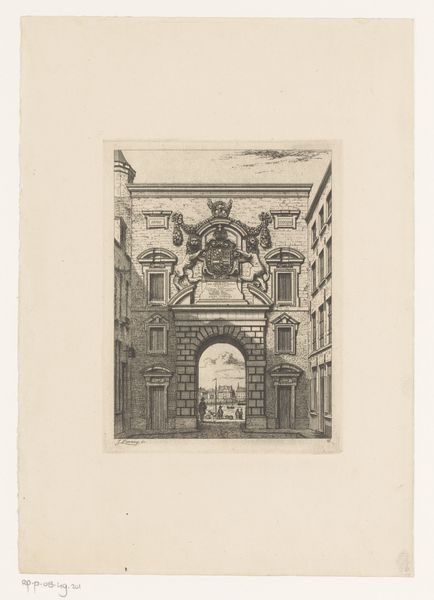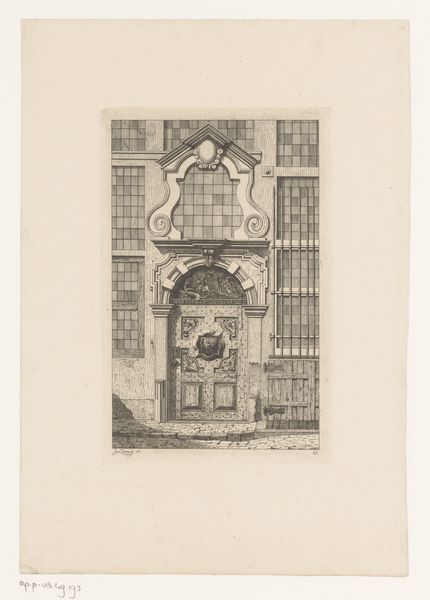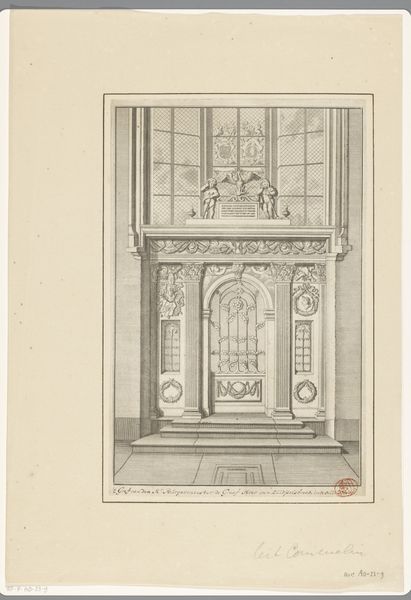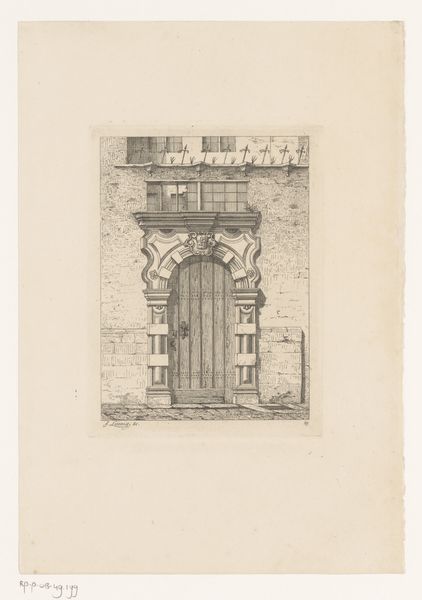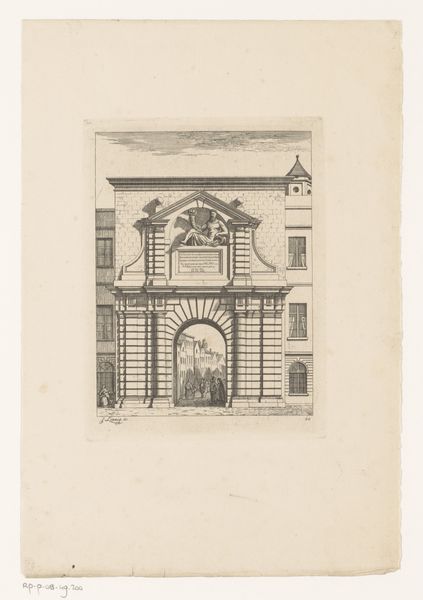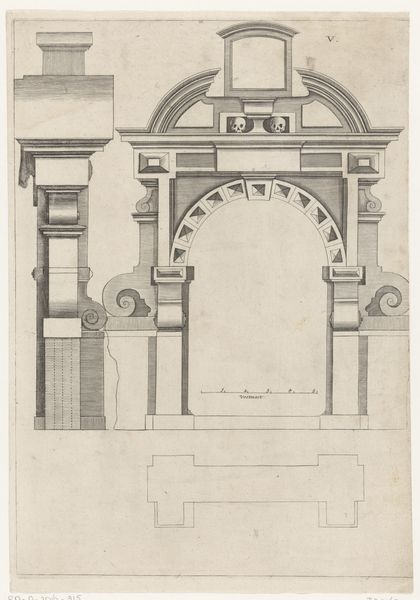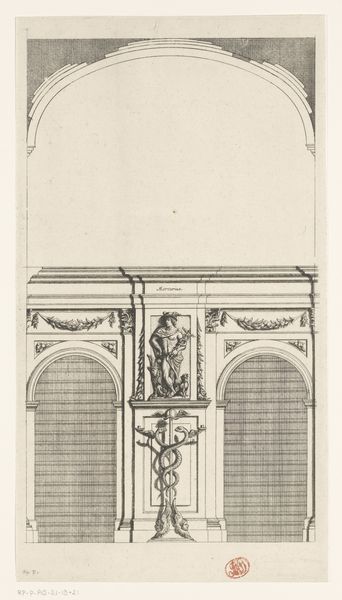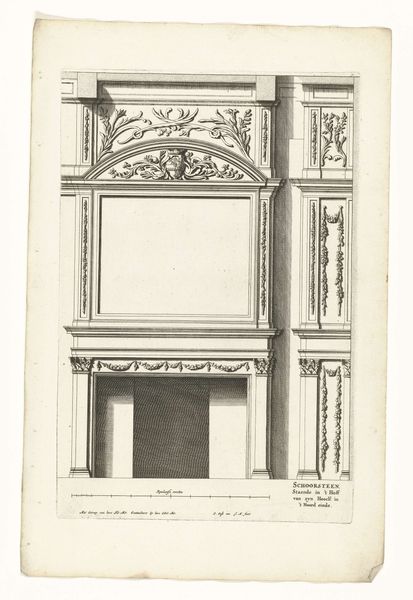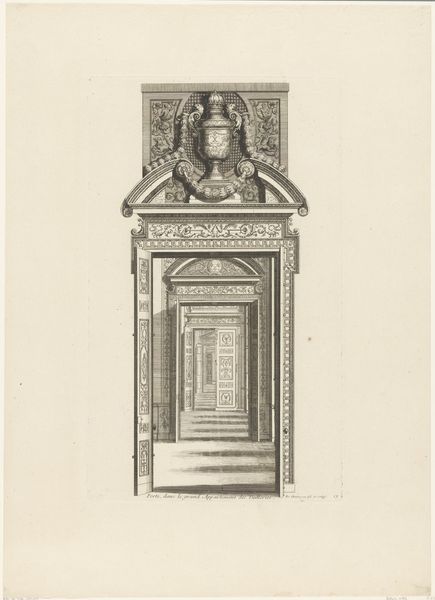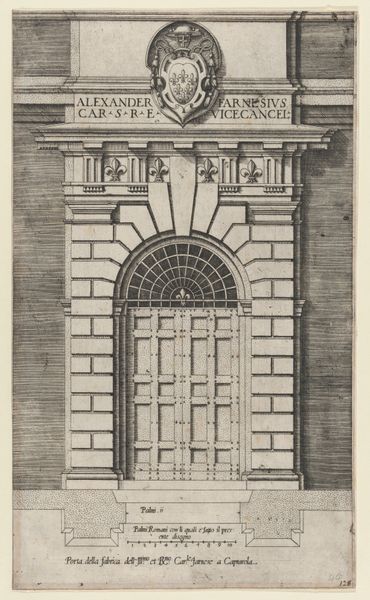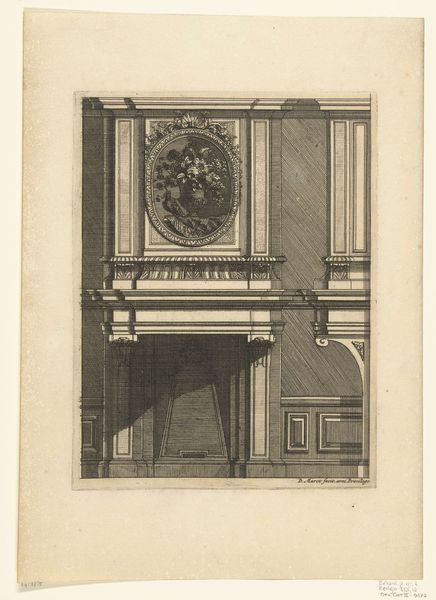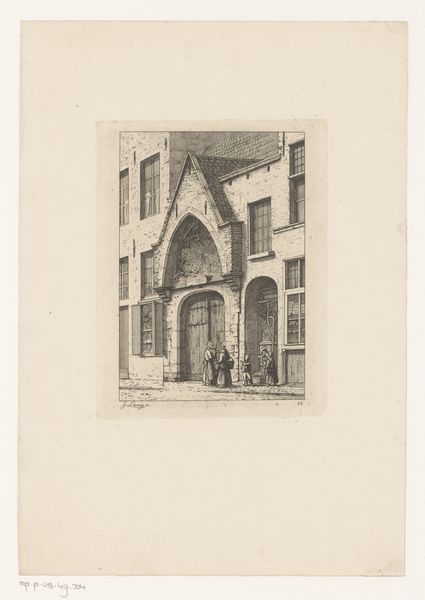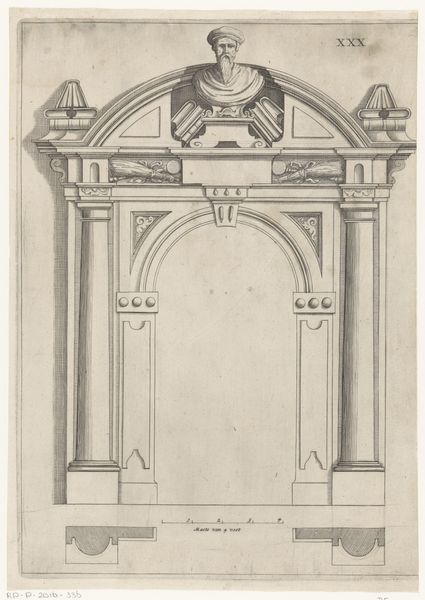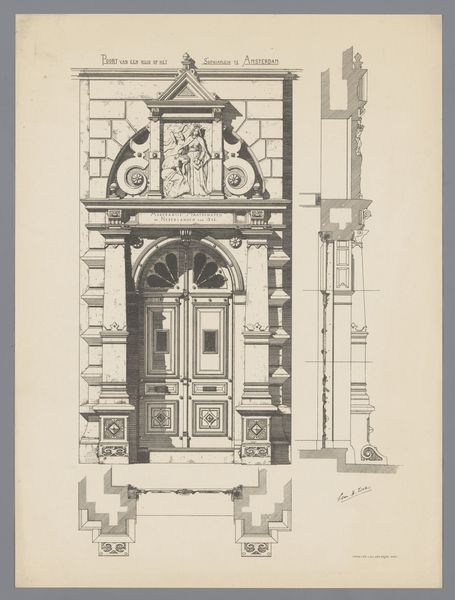
print, intaglio, engraving, architecture
# print
#
intaglio
#
landscape
#
engraving
#
architecture
#
realism
Dimensions: height 165 mm, width 113 mm
Copyright: Rijks Museum: Open Domain
Editor: This print by Jean Théodore Joseph Linnig, "Poort van een voormalig huis in de Keizerstraat in Antwerpen" from 1868, presents an entryway in incredibly detailed engraving. The scale makes it feel monumental, and there's a sense of history embedded in every line. How does the context of its time inform the piece? Curator: That’s a perceptive observation. In 1868, Antwerp was experiencing significant urban transformation. Prints like this served as historical records, documenting the city's architectural heritage, sometimes even before buildings were lost to modernization. Editor: So, it's less about artistic expression and more about historical preservation? Curator: Not exclusively. The act of choosing *this* particular door, of highlighting its ornate details through a painstaking process of engraving, speaks to a cultural value system. What does this level of detail tell us about the intended audience? Editor: I imagine it’s geared towards an educated, perhaps nostalgic, middle class, keen to see and value reminders of the past in a rapidly changing Antwerp. Was there a broader trend of documenting architecture at this time? Curator: Absolutely! This period saw the rise of heritage movements, fueled by both a desire to preserve national identity and a burgeoning tourist industry. Prints allowed for wide dissemination of architectural imagery. This door, for example, becomes more than just a portal; it's a symbol of Antwerp’s cultural identity being carefully constructed and marketed. How does knowing that change your perspective on the artwork? Editor: It’s interesting how what appears to be a simple image carries complex cultural weight. I initially just saw a pretty door. Curator: Exactly. By exploring the social and political landscape, we uncover how the artwork participated in shaping public memory and national narratives. Editor: That gives me a completely new understanding of the role of art beyond its surface aesthetics. Thanks! Curator: And I’m reminded how essential it is to see artworks as participants in cultural discourse, not just pretty pictures.
Comments
No comments
Be the first to comment and join the conversation on the ultimate creative platform.
